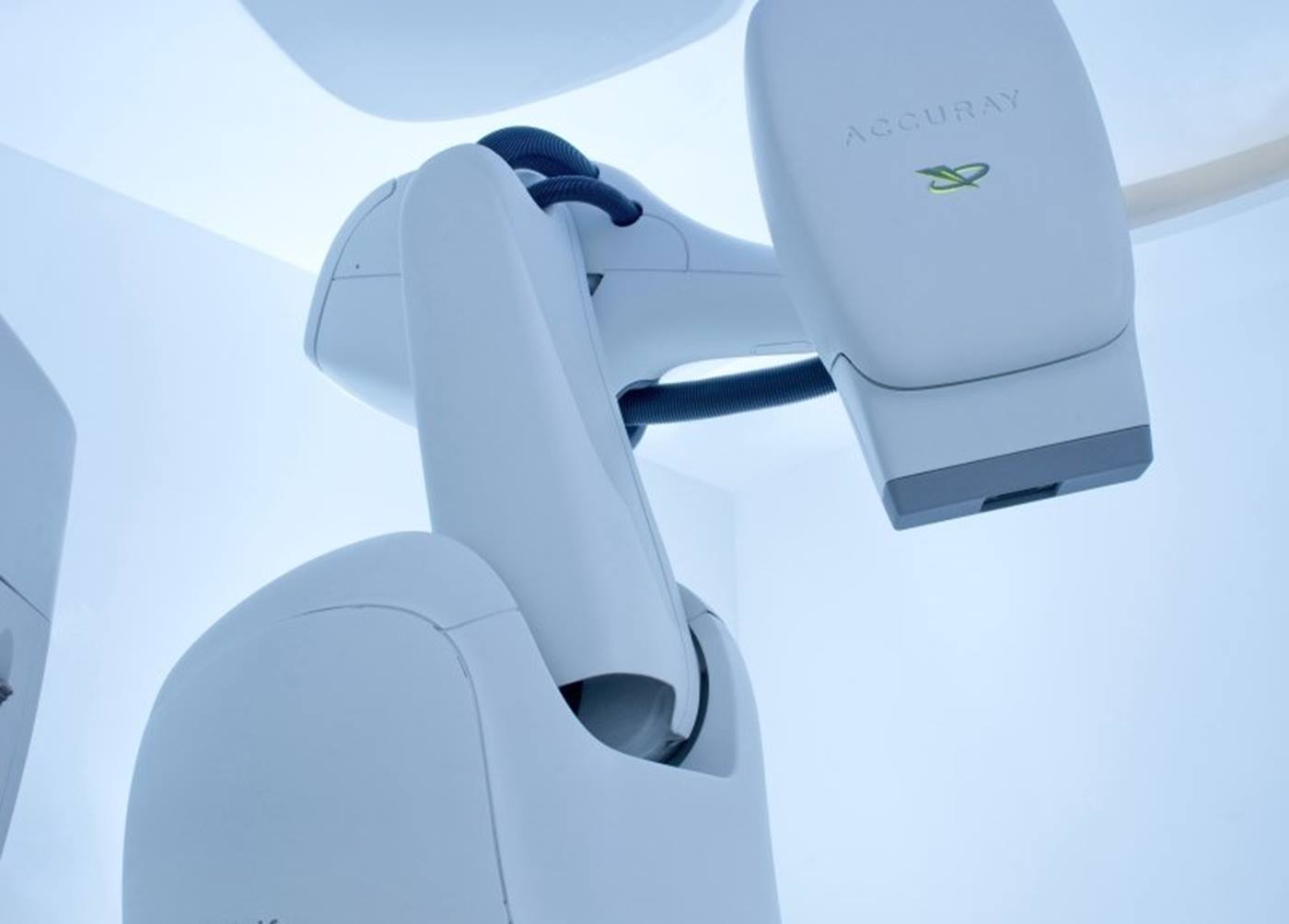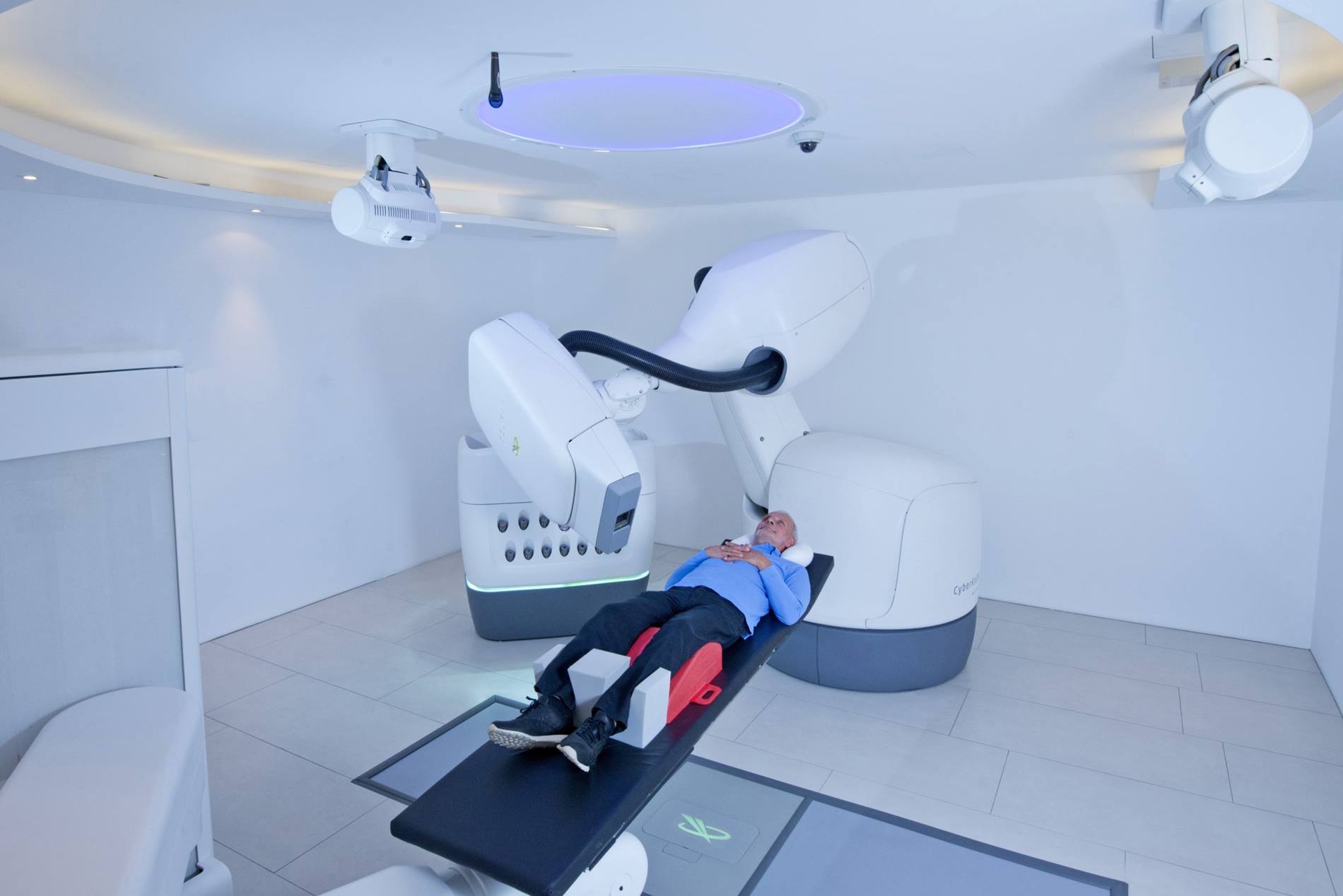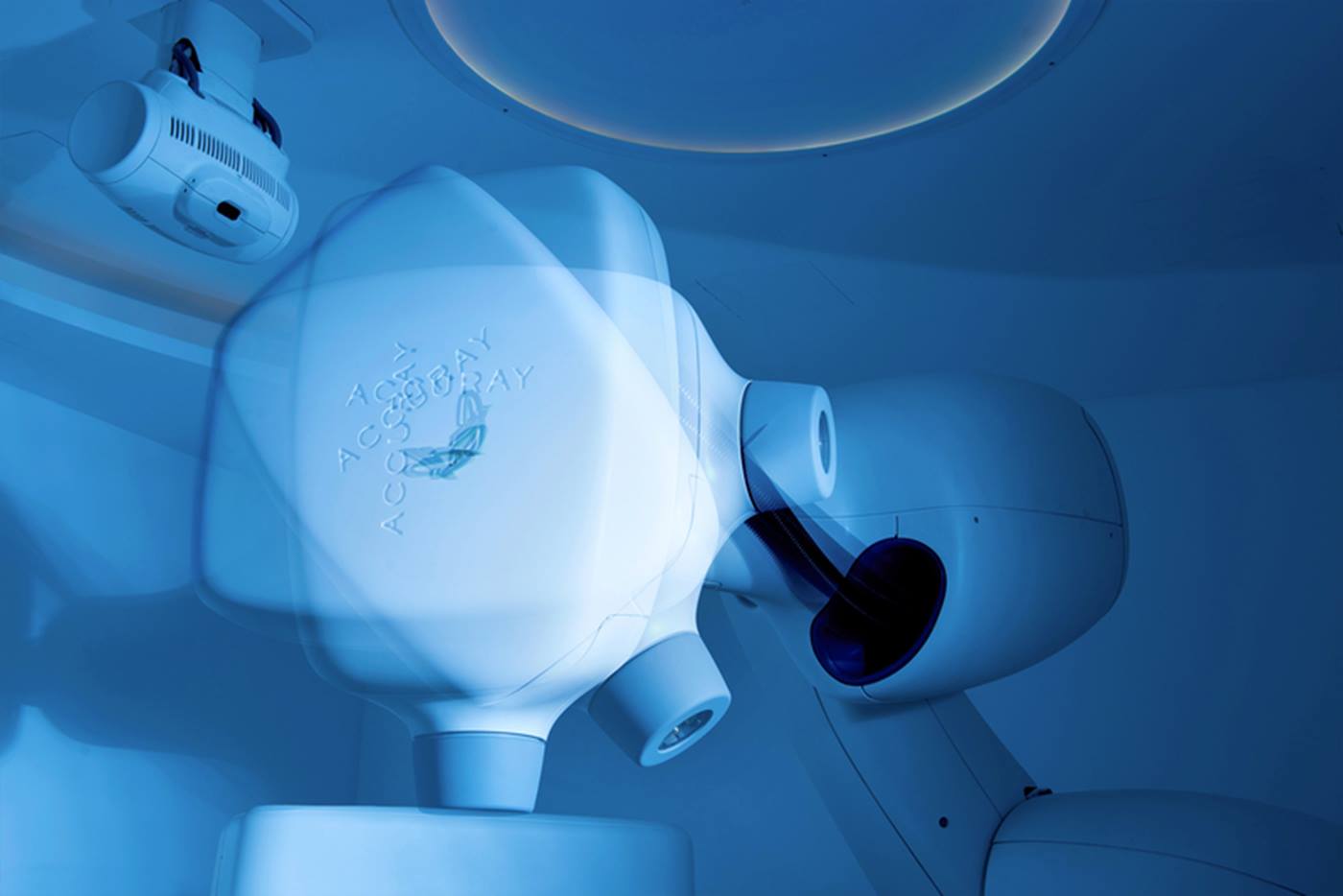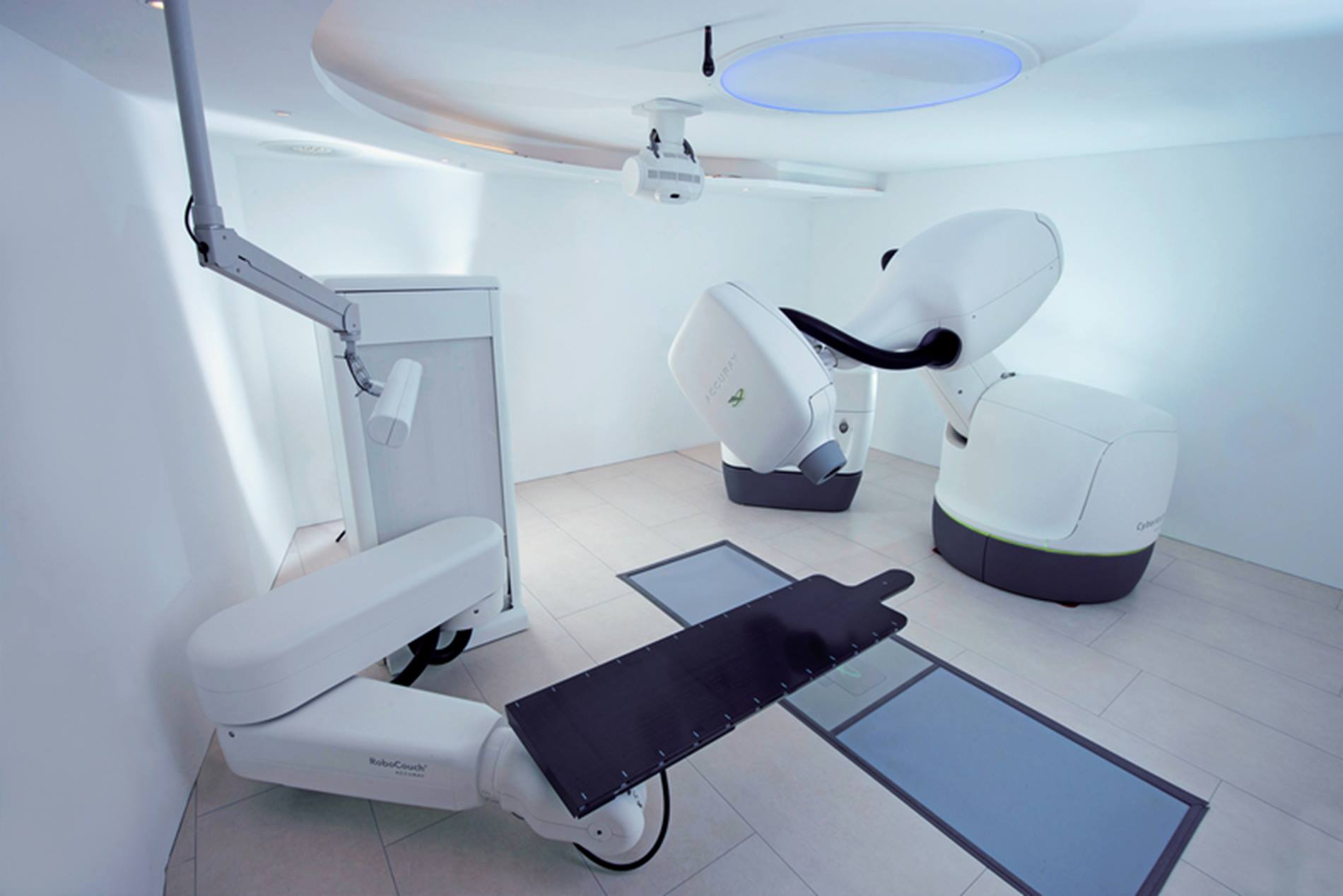KUKA robots help make the CyberKnife® System from Accuray an effective instrument in the treatment of tumors
The virtual knife, better known as the CyberKnife® System, is an alternative to conventional radiotherapy. “With this system, we perform radiosurgery – i.e. a treatment that applies radiation with the utmost precision. Thanks to the integration of an image guidance system with robotic technology, we achieve sub-millimeter accuracy,” explains Prof. Dr. Alexander Muacevic, radiosurgeon and neurosurgeon at the CyberKnife Center in Munich. The original ideas behind the device date back to 1987 at Stanford University in the USA. There, the first commercial system was established as early as 2001, already with an integrated KUKA robot. Back then, most robot manufacturers shied away from having their systems used on patients. Not the case with the market leader from Augsburg, which also distinguished itself with strong support for Accuray, the medical product manufacturer that produces the CyberKnife® System.








